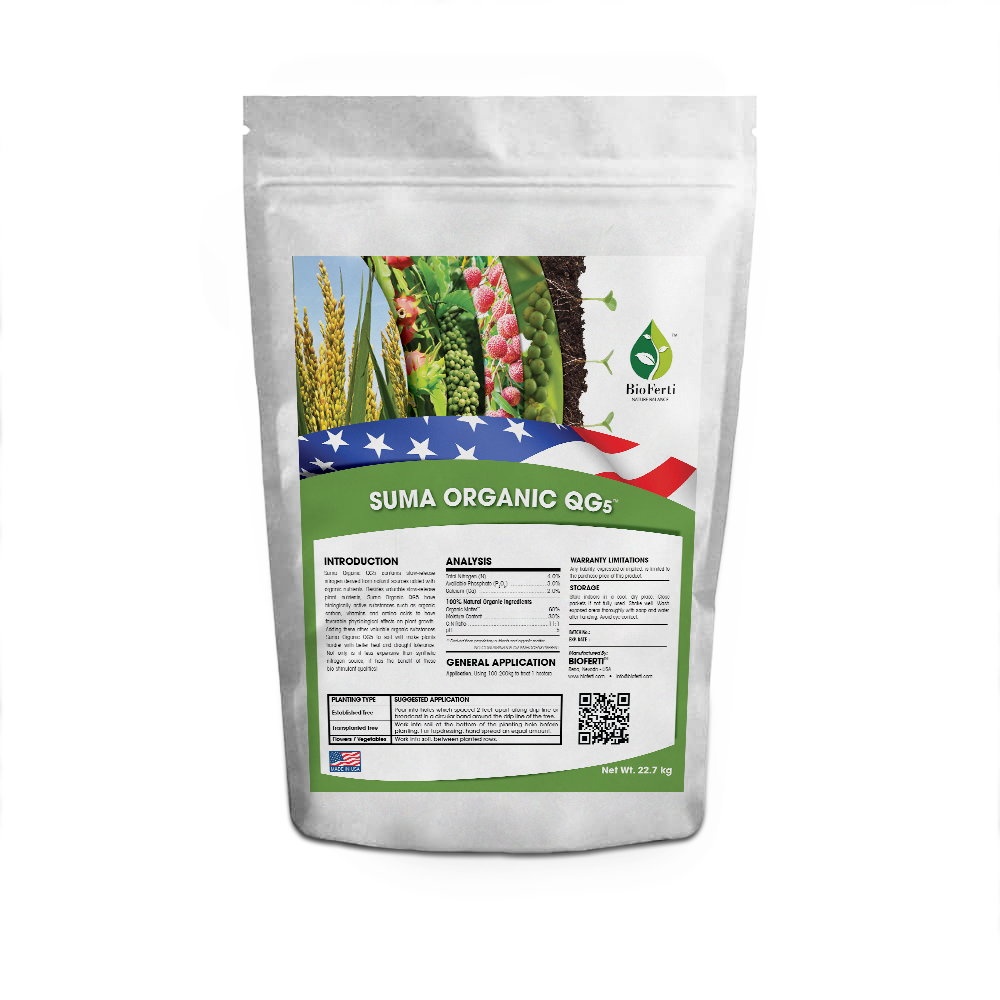Reference: https://forestinfo.ca/faqs/how-long-does-glyphosate-remain-in-the-soil-water-plants-and-sediments-after-treatment/
Glyphosate is considered non-persistent in plants, soils, water and sediments. This can be attributed largely to a number of microorganisms that break down glyphosate for food, removing it from the ecosystem. Studies show that it takes only a few days to a few weeks for 50% of the glyphosate to dissipate from various environmental compartments in a treatment site. In soils and sediments, low residue levels may be detected for up to a year following treatment; however, such residues are considered to be strongly bound, biologically unavailable and not of toxicological significance.
Glyphosate is highly susceptible to degradation by microbial organisms (bacteria and fungi) in soils, water and sediments and also readily dispersed by plants and thus considered to be non-persistent in the environment. The time for 50% dissipation (DT50) for glyphosate in forest plants, soils water and sediments ranges from a few days to a few weeks, depending largely upon environmental conditions which influence microbial activity. The major transformation product in soil, sediments and water is aminomethylphosphonic acid (AMPA) which typically shows a pattern of transient increase as it is formed through the glyphosate degradation process and then declines as the degradation product itself begins to degrade. This pattern typically results in AMPA residues persisting longer in soils and sediments than glyphosate itself.
In plants, glyphosate is taken up largely through the foliage and redistributed through the plant to roots and actively growing areas and metabolized within the plant with an approximate time to 50% dissipation of foliar residues ranging from approximately 2 days (Thompson et al. 1994) to 10-27 days (Newton et al. 1984; Feng and Thompson 1990). Legris and Couture 1990, documented glyphosate residues peaking in raspberry foliage at 3 weeks post-treatment and then declining rapidly (~ 90%) in the five week period thereafter.
Glyphosate is readily metabolized by soil bacteria and many species of soil microorganisms can use glyphosate as sole carbon source (Durkin 2003). In soils, water and sediments, glyphosate is degraded primarily by microbial organisms to form the primary degradation product amino methyl phosphonic acid (AMPA) and subsequently to carbon dioxide and simple inorganic compounds, therefore it does not persist (Torstensson 1985). The time taken for glyphosate concentrations in forest litter or soils to decrease by 50% ranges from approximately 10 to 60 days depending upon environmental conditions (Thompson et al. 2000; Roy et al. 1989; Newton et al. 1994; Newton et al. 1984, Feng et al. 1990; Legris and Couture 1988). In general soils which are warm, moist and rich in organic matter show the most rapid degradation, largely because these conditions are conducive to higher microbial populations and activity. In a forestry study conducted in New Brunswick, Thompson et al. (2000) showed that glyphosate residues in both the forest floor and mineral soil layers dissipated rapidly with average half-lives < 12 days for three different glyphosate formulations tested. A recent study conducted in Alaska (Newton et al. 2008) demonstrated significant degradation of glyphosate soil residues even under extreme conditions of late summer/fall application and long subsequent periods of freezing conditions.
In aquatic systems, glyphosate is degraded by microorganisms and attenuated from the water column by sorption to bottom sediments and in moving waters by dilution. In standing water, the time required for 50% dissipation of glyphosate residues in water depends upon the environmental conditions including temperature, water depth, presence of macrophytes and water: sediment ratios and generally range from a few days to approximately 4 weeks. (Legris and Couture 1990; Couture et al. 1995; Goldsborough and Beck 1989; Goldsborough and Brown 1993; Wojtaszek et al. 2004; Newton et al. 1994; Edge et al. 2014). In moving water systems, glyphosate dissipates rapidly and typically reaches non-detectable levels within 1- 4 days (Feng et al. 1990; Newton et al. 1984; Newton et al. 1994). In both standing and running waters, bottom sediments tend to be a primary sink for glyphosate residues where they typically show a transient peak as residues partition or carried down into the sediments and then declining levels thereafter (Goldsborough and Brown 1993; Feng et al. 1990; Newton et al. 1984; Edge et al 2014), although sediment residues may be somewhat more persistent, they are also believed to be biologically unavailable due to strong binding in bottom sediments (Newton et al. 1994).
In a British Columbia forestry study, Feng and Thompson (1990) showed residues of the primary degradation product AMPA in leaf litter dissipate readily with time post-application and were at or below limits of detection within 29 days. In soils, AMPA concentrations showed a transient increase associated with initial degradation of glyphosate with generally declining levels thereafter reaching low levels equivalent to 6-27% of initial glyphosate residue concentrations by one year post-treatment. Similarly, Roy et al. (1989) reported transient increases in AMPA in Ontario forest soils, with low concentrations relative to glyphosate levels at any discrete sampling time and concentrations approximating 2% of initial glyphosate levels by one year post-treatment.
Thompson, D.G. D.G. Pitt, T. Buscarini, B. Staznik, D.R. Thomas and E. Kettela. 1994. Initial deposits and persistence of forest herbicide residues in sugar maple (Acer saccharum) foliage. Can. J. For Res. 24:2251-2262.
Newton M, Howard KM, Kelpsas BR, Danhaus R, Lottman CM, Dubelman S. Fate of glyphosate in an Oregon forest. Journal of Agricultural and Food Chemistry. 1984; 32:1144-51.
Feng JC, Thompson DG. Fate of Glyphosate in a Canadian Forest Watershed. 2. Persistence in Foliage and Soils. Journal of Agriculture and Food Chemistry. 1990; 38:1118-25.
Legris J, Couture G. Residus de glyphosate dans un ecosysteme forestier suite a des pulverisations aeriennes au Quebec en 1987. Gouvernment du Quebec, Ministere de l’Energie et des Ressources, Direction de la conservation ER90-3085. 1990:35.
Durkin PR. Glyphosate – Human health and ecological risk assessment report. Syracuse Environmental Research Associates Inc, Fayetteville NY 2003.
Torstensson L. Behaviour of glyphosate in soils and its degradation. The Herbicide Glyphosate1985. p. 137-50.
Thompson DG, Pitt DG, Buscarini TM, Staznik B, Thomas DR. Comparative fate of glyphosate and triclopyr herbicides in the forest floor and mineral soil of an Acadian forest regeneration site. Canadian Journal of Forest Research. 2000; 30:1808-16.
Roy DN, Konar SK, Banerjee S, Charles DA, Thompson DG, Prasad R. Persistence, Movement, and Degradation of Glyphosate in Selected Canadian Boreal Forest Soils. Journal of Agriculture and Food Chemistry. 1989;37:437-40.
Newton M, Horner LM, Cowell JE, White DE, Cole EC. Dissipation of glyphosate and aminomethylphosphonic acid in North American forests. Journal of Agricultural and Food Chemistry. 1994; 42(8):1795-802.
Feng JC, Thompson DG, Reynolds PE. Fate of Glyphosate in a Canadian Forest Watershed. 1. Aquatic Residues and Off-Target Deposit Assessment. Journal of Agriculture and Food Chemistry. 1990; 38:1110-8.
Legris J, Couture G. Residues de glyphosate dans le sol forestier suite a des pulverizations terrestres en 1985 et 1986. Gouvernement du Quebec Ministere de l’Energie et des Ressources Direction de la Conservation. 1988:22p.
Newton M, Cole EC, and Tinsley IJ. Dissipation of four forest-use herbicides at high latitudes. Environmental Science and Pollution Research. 2008; 15(7):573-83
Couture G, Legris J, Langevin R, Laberge L. Evaluation of the impacts of glyphosate as used in forests (English abstract, French text). Ministere des Ressources naturelles, Direction de l’environnement forestier, Publ No RN95-3082. 1995:187.
Goldsborough LG, Beck AE. Rapid Dissipation of Glyphosate in Small Forest Ponds. Archives of Environmental Contamination and Toxicology. 1989;18:537-44.
Goldsborough LG, Brown DJ. Dissipation of glyphosate and aminomethylphosphonic acid in water and sediments of boreal forest ponds. Evironmental Toxicology and Chemistry. 1993;12(7):1139-47.
Wojtaszek BF, Staznik B, Chartrand DT, Stephenson GR, Thompson DG. Effects of Vision® Herbicide on Mortality, Avoidance Response, and Growth of Amphibian Larvae in Two Forest Wetlands. Environmental Toxicology and Chemistry. 2004; 23(4):832-42.
Edge C, Thompson D, Hao C, Houlahan J. The response of amphibian larvae to exposure to a glyphsate-based herbicide (RoundupWeatherMax) and nutrient enrichment in an ecosystem experiment. EcotoxicologyandEnvironmentalSafety. 2014; 109:124-32.
#plantfood #flower #vegetable #fertilizer #bioferti #microbesfertilizer #fertilizerusa
BioFertilizer #BioInsecticide #BiocontrolAgents #Nematicide #Paecilomyceslilacinus #rootknotnematodes #soilamendments #BioFertilizer #bacillusmegaterium #soilamendments #BioFertilizer #BioFungicide #BiocontrolAgents #Microbialfertilizer #rootgrowth #soilamendments #Trichoderma #Trichodermaharzianum #BioFertilizer #BioFungicide #BiocontrolAgents #controlpathogens #Microbialfertilizer #rootgrowth #seedtreatment #soilamendments #solubilizemineralphosphates #BioFertilizer #BioFungicide #BiocontrolAgents #Trichodermaviride




